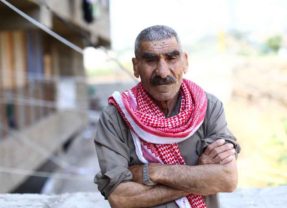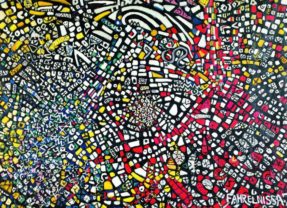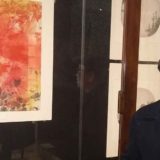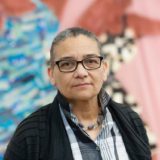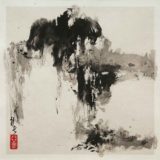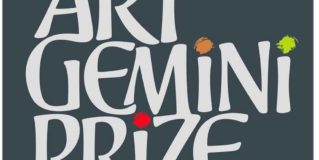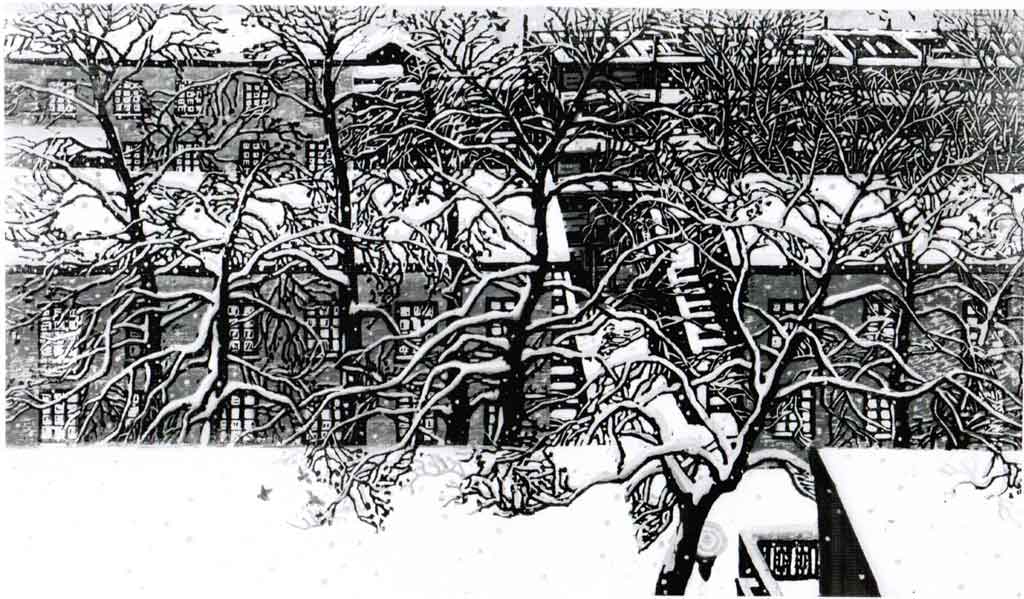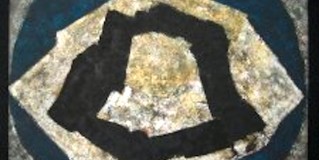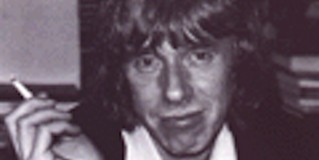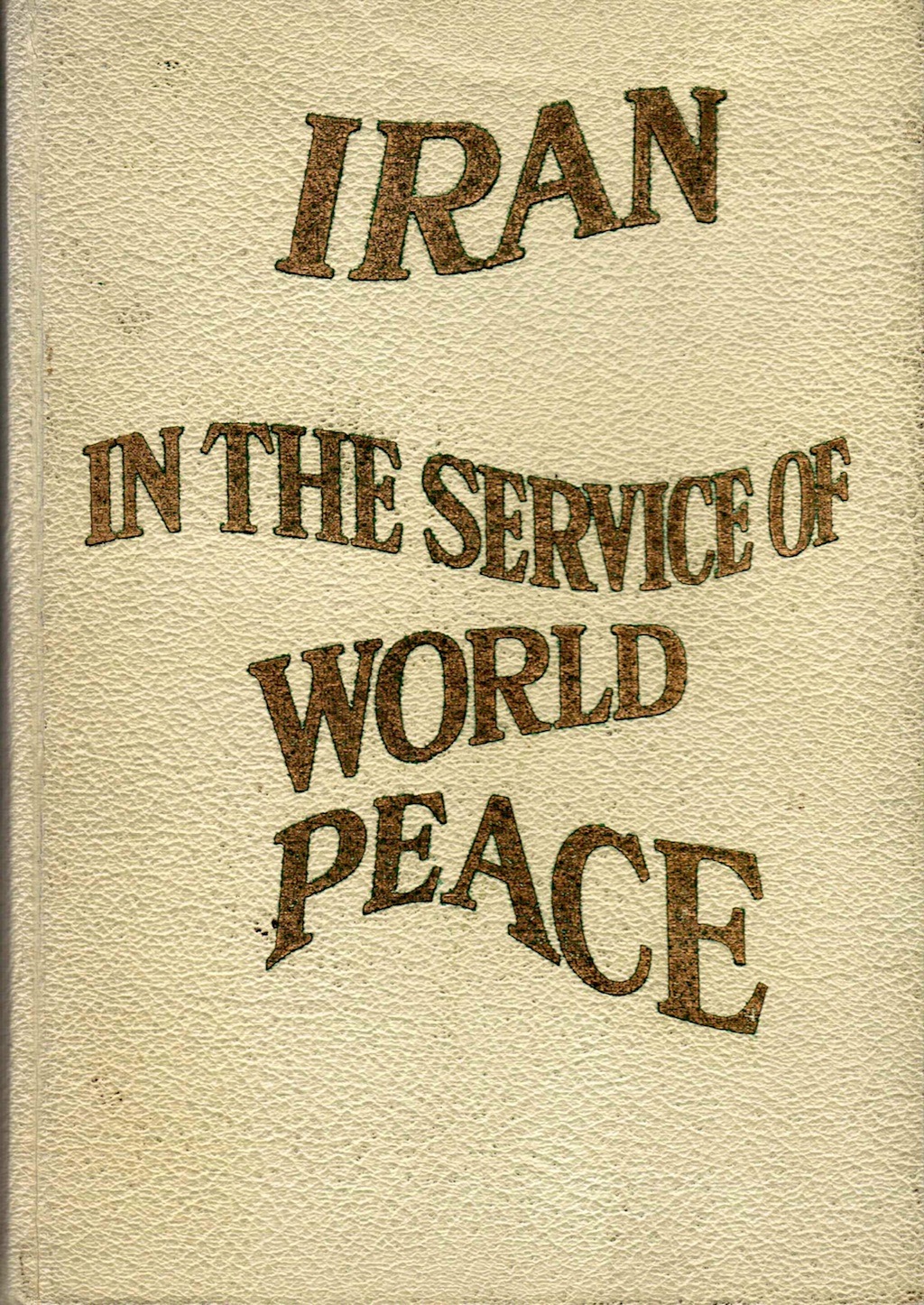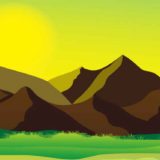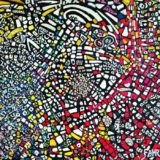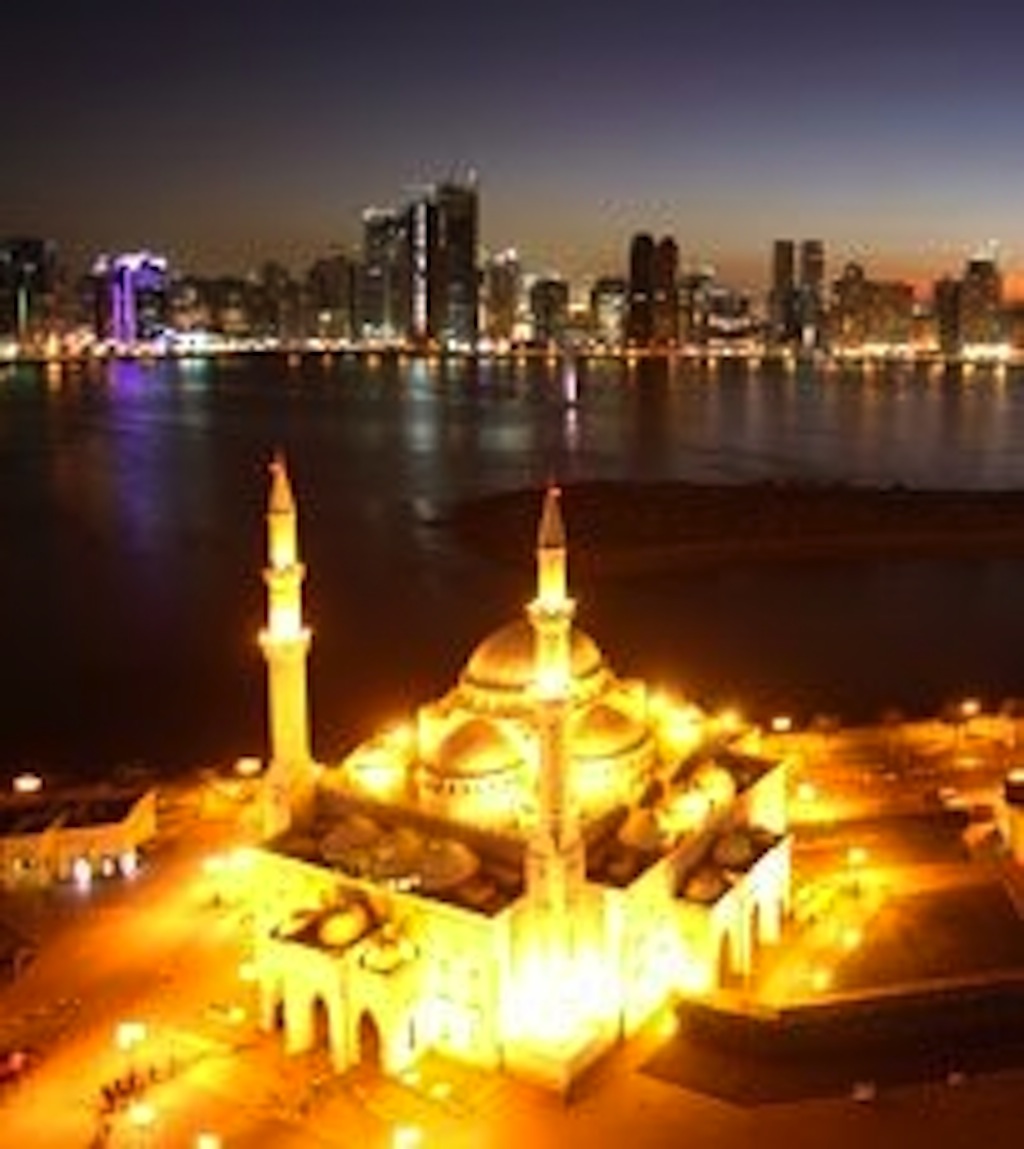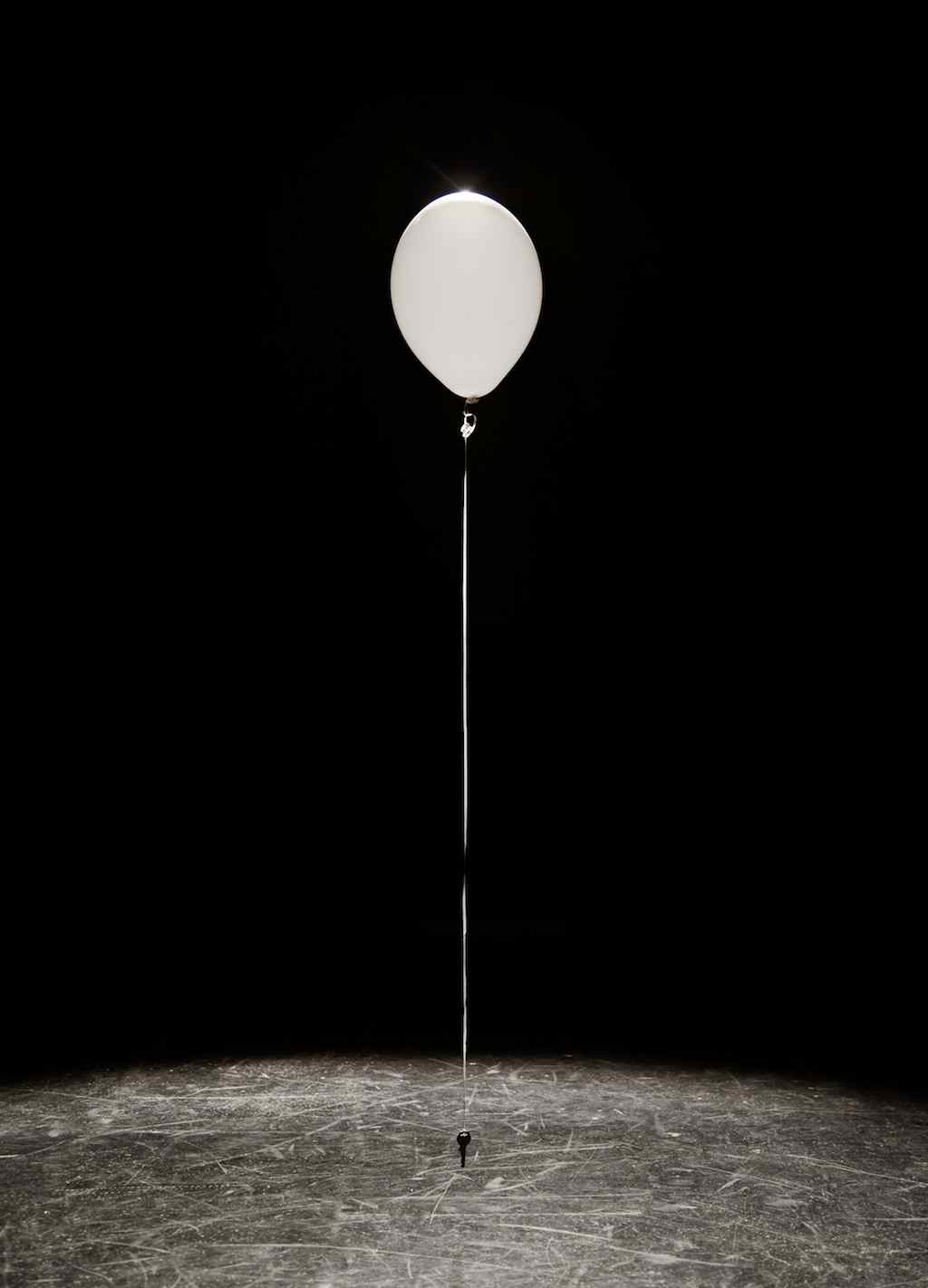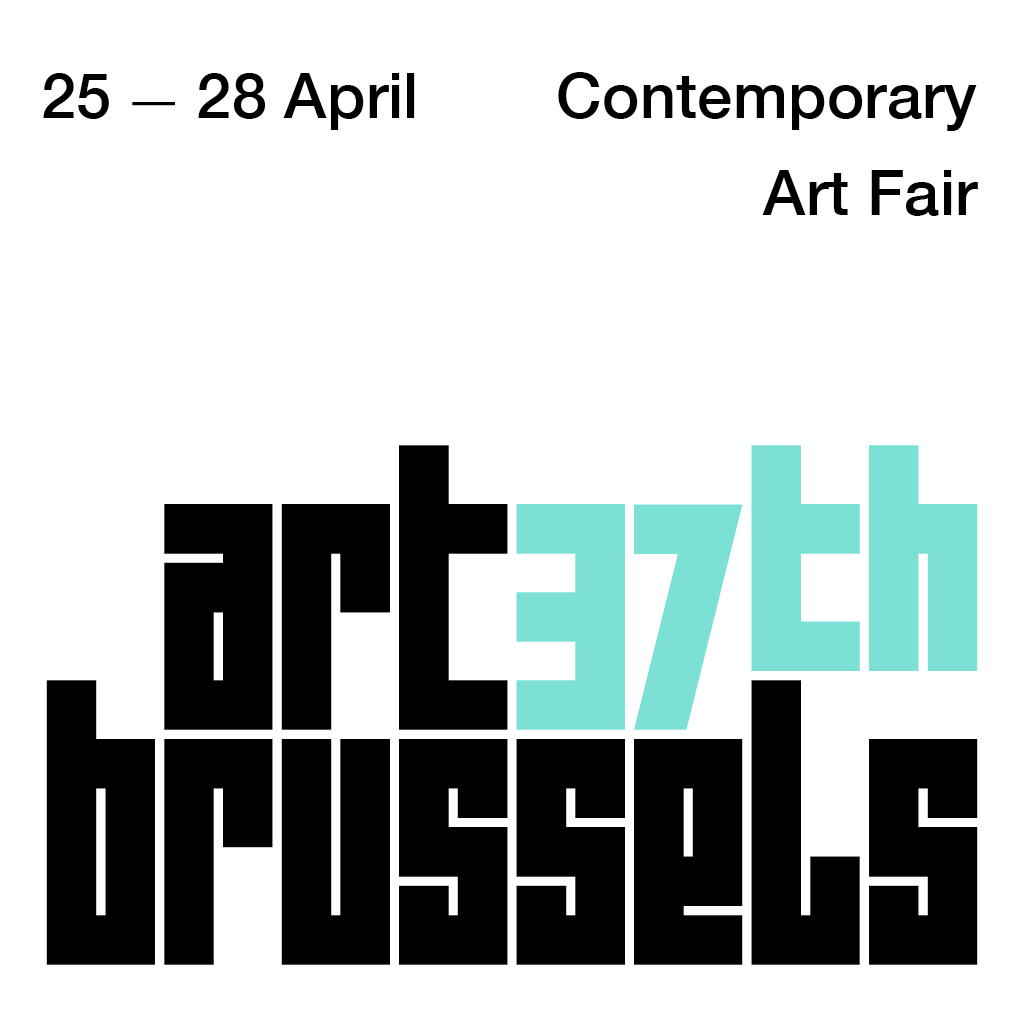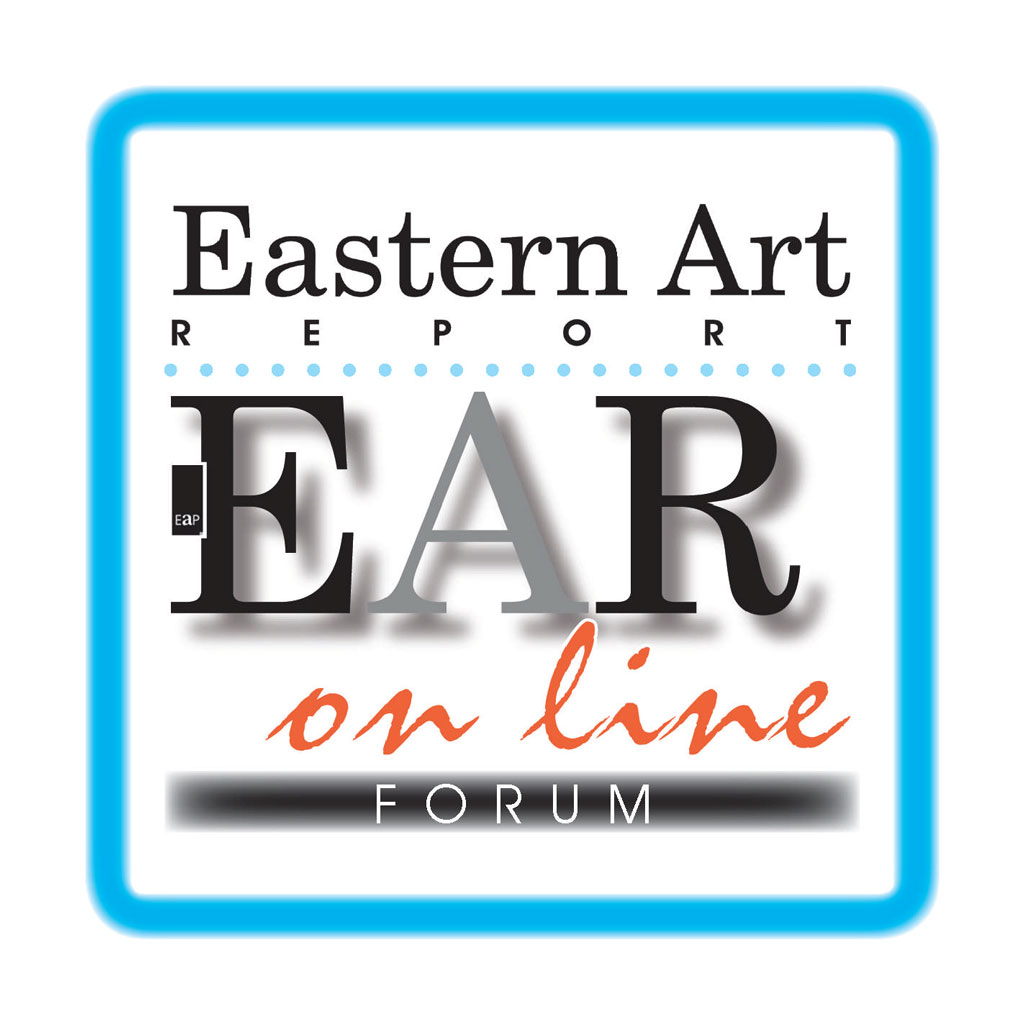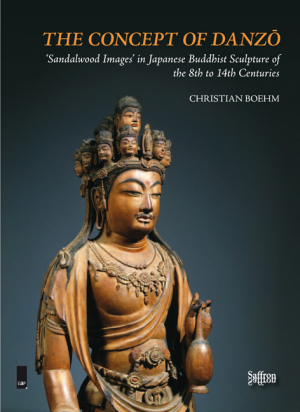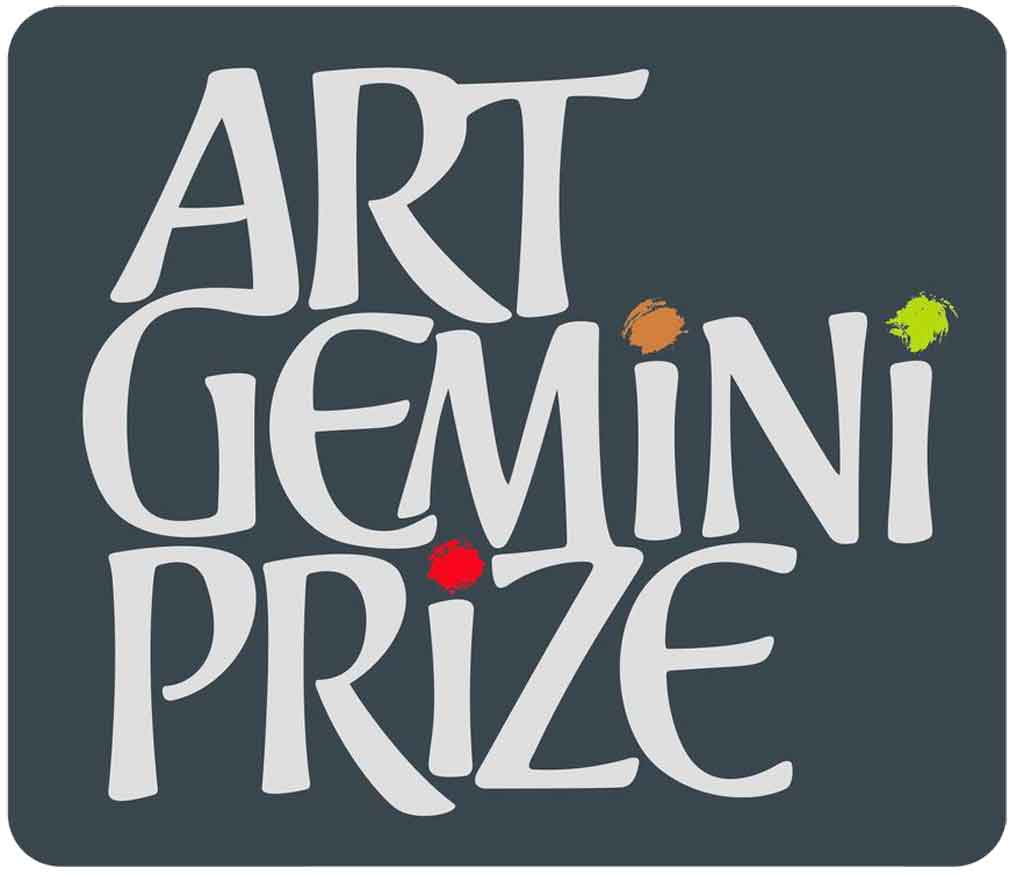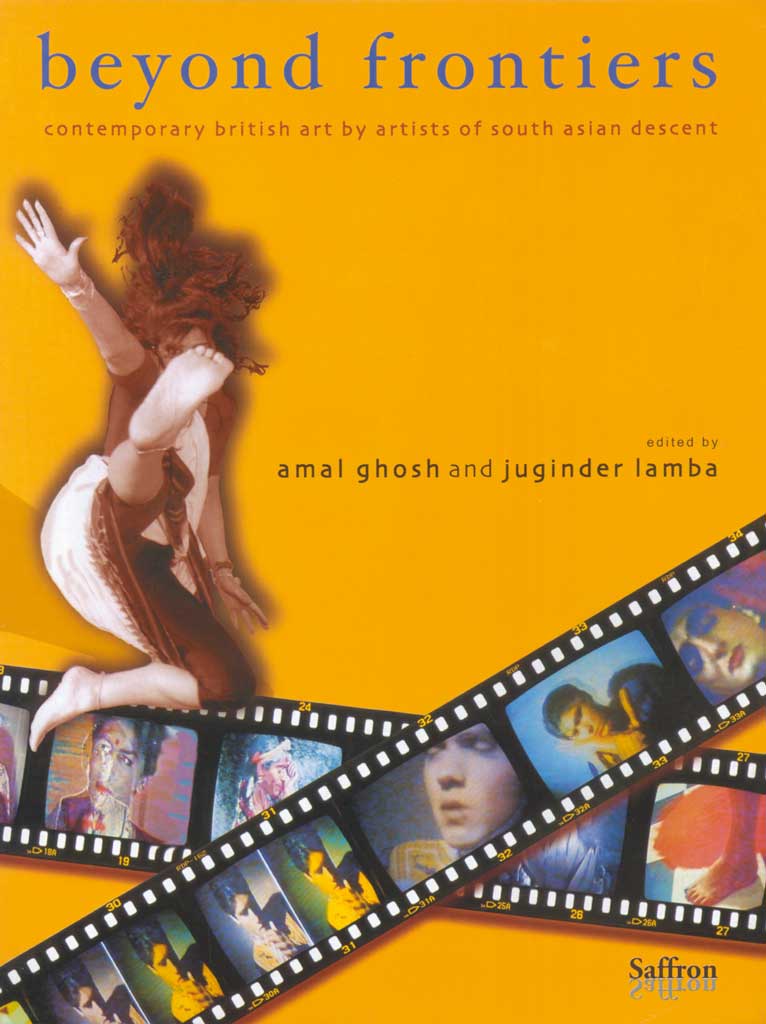Recent Posts From NEWS
Iran sets sights on cultural projection through vibrant contemporary art
Iran has set sights on reaching out to the international community through a...
Hai Shuet Yeung showcased in British Museum gallery refit
British Chinese artist Hai Shuet Yeung MBE is showcased in the British...
Turner Prize goes to Lubaina Himid
The 2017 Turner Prize has gone to Lubaina Himid, at 63 reportedly the oldest...
Seeing art in juxtaposition
The Welsh capital is host to Juxtaposition, which explores the idea of what...
Popular Posts All Time
- ArtGemini Prize 6th cycle calls artists
- Wilfred Thesiger in conversation with Sajid Rizvi
- Images of the Western Lake: The revival of the colour print in contemporary China
- Kenji Yoshida in conversation with Sajid Rizvi
- AFIS Syndication
- Robert Beer: Brush Strokes of Freedom
- An Austere Mix of Cultures: Deanna Petherbridge in conversation
- Two artists in London: Selvi Tektas and Tracey Emin
- About EAR
- Iran in the Service of World Peace
ArtGemini Prize 6th cycle calls artists
The ArtGemini Prize 2018 is upon us and the sixth annual cycle offers opportunities to artists of all ages from an international spectrum. This year’s edition again offers cash awards and recognition in the categories of painting, photography and sculpture. A total cash prize fund includes an overall prize of £3000; Painting £500; Photography £500; Sculpture £500; and Public Choice (by online voting) £500. A finalists’ exhibition will take place 25-29 September 2018 at London’s Menier Gallery. Entry fee: £20. Deadline for entries: 1 July 2018. Details here |...
Wilfred Thesiger in conversation with Sajid Rizvi
The former British soldier, explorer and photographer talks about an era long gone with the first gush of oil but still retained in his memory as an important part of human experience. [Thesiger died in 2003, this interview took place in 1996] . This article, originally titled Wilfred Thesiger–Talking of Times Past and of a Present Imperfect is reproduced from Eastern Art Report Volume IV Number 3 © 1996-2014. All rights reserved Introducing Visions of a Nomad[1], which celebrated his photographs, Wilfred Thesiger wrote that he had “never taken any photographs with the intention of publishing them, any more than … ever made a journey in order to write about it.” Yet he is acknowledged as one of most valued and entertaining chroniclers of an age long past in the Middle East and in his native Africa.[2] The Marsh Arabs is virtually all that remains of the life and society in southern Iraq, vengefully destroyed by President Saddam Hussein in the aftermath of the Gulf War 1990-91.[3] Of the many places photographed by Thesiger few have remained unchanged. His disclaimers notwithstanding, Thesiger’s texts and photographs have been published extensively to great public acclaim. The photographs were exhibited for...
Images of the Western Lake: The revival of the colour print in contemporary China
Images of the Western Lake: The revival of the colour print in contemporary China was an important exhibition and conference organised by former British Museum curator Anne Farrer in February 1996, writes SAJID RIZVI. This image of a watercolour woodblock print by Du Rongyao (born December 1927) was one of numerous seen during the exhibition and the study day. One of three contributions by Farrer to the study was published in 2010 under the title ‘Images from the West Lake: Printmaking at the China National Academy in Hangzhou’ in an edited volume, Clarissa von Spee ed., The Printed Image in China From the 8th to the 21st Centuries, The British Museum Press, London, 2010, pp46-56, 178-179. Du Rongyao 1986. Snow, watercolour woodblock print. 38cm x 65.6 cm. Photograph: British Museum....
Kenji Yoshida in conversation with Sajid Rizvi
In 1993 the British Museum organised a solo exhibition of works by Kenji Yoshida in the newly refurbished Japanese Galleries, the first living artist to be exhibited in that prestigious space. At the opening, Kenji Yoshida 吉田堅治 spoke to Eastern Art Report Editor Sajid Rizvi through an interpreter. Below are edited excerpts from that interview: Sajid Rizvi. What do you think of the current exhibition—are you happy with it? Kenji Yoshida. I am very happy with it. SR. Does it represent you in your art as you are? KY. I feel that they have presented all the work; that is what I feel at the moment. SR. You have lived outside Japan for so long that it is almost impossible to say whether you are a European artist or a Japanese artist. How do you feel? KY. I feel that I am Yoshida. Not European nor Japanese. Nationality comes after the person himself. SR. Do you see your art having an impact on other artists in Europe? KY. I don’t myself see it that way, but through my art I can communicate with many different people as a result of what I do. SR. An artist usually—usually!— draws his/her...
AFIS Syndication
A selection of text and image material from EAP print publications as well as EAP websites, mostly proprietary articles and photographs generated by EAP staff, is available for syndication. Academic File, now a division of EAPGROUP, has operated a news and photo syndication service since 1985 and has made its archives available to EAP. Academic File Image Archive Academic File Information Services (AFIS), a division of EAPGROUP International Media, maintains an extensive archive of images of general global interest, as well as materials on film, paper and other media dealing with numerous subjects from both the developed and developing worlds. These are original EAP copyright images, ie not images used in EAP periodicals or on EAP websites and lent by other institutions, and can be lent to private and public institutions, including publications, in return for a reasonable fee. The archive is large and while it may be possible eventually to put its highlights on the Web, those interested in using these images, in the first instance, should use the form below to send a brief message outlining their requirements. EAP will respond promptly and will email a low resolution image from its archives if it meets the requirements...
Robert Beer: Brush Strokes of Freedom
Pursuit of art in the Tibetan tradition has been the occupation of a lifetime for the British painter Robert Beer, writes Sajid Rizvi. In this conversation first published in 1991, Robert Beer spoke to Sajid Rizvi, Publisher and Editor in Chief of Eastern Art Report, about his work and experiences. (Reproduced from Eastern Art Report print edition Vol III No. 1). Edited excerpts: Sajid Rizvi. You’ve been painting for more than 20 years; how has your art evolved in this period? Robert Beer. I was painting before I went to India in 1970. Already, at that time, I was interested in symbolic and religious paintings. SR. In the western tradition? RB. Yes, mainly from the Grail romances. I was inspired by the English writing. From that developed an interest in Indian and Buddhist art, and then Tibetan art. R SR. You haven’t gone back to the European tradition? RB. No, not at all. SR. Do you have any of your early paintings? RB. No, they were all destroyed while I was away and the family had a big cleanout of the house. That I lost them was good anyway, because I would have done it myself! SR. You don’t...
An Austere Mix of Cultures: Deanna Petherbridge in conversation
DEANNA PETHERBRIDGE exhibited her latest series of ink and wash drawings at London’s Fischer Fine Arts Gallery, since closed. One of her works deals with the Rushdie affair. In an interview with SAJID RIZVI Petherbridge discussed her work, its relevance to the present times and her own place in art. Edited excerpts: Reproduced from Eastern Art Report Volume I No 22 [22] Sajid Rizvi. What does your painting, The Judgement Against Rushdie, indicate? What is its relevance to the present art scene and what inspired you to do it? Deanna Petherbridge. Most of the work for this exhibition has been done in my house in Greece in a very isolated studio, where I am far away from newspapers, radio and other context. I tend to become much more contemplative, and perhaps much more personal in my thoughts. In the spring of last year, when I started work on this exhibition, I had actually read Rushdie’s The Satanic Verses. I have to say that parts of it I found extraordinarily funny … the bits where he talks about Indian personalities, the scenes he knows best. But I did find other parts offensive. I felt that he had been inspired by...
Two artists in London: Selvi Tektas and Tracey Emin
Sajid Rizvi of Eastern Art Report talked to two young Turkish artists living in England, Selvi Tektaş aka Tektash and Tracey Emin. True to form, during the brief conversation, Tracey Emin dropped a broad hint about her intended creative trajectory that was to propel her into fame in later years. “I don’t feel that I fit into any category anyway and I certainly wouldn’t say I’m ‘Inner City’,” she said. Edited excerpts, originally published in Eastern Art Report, Volume I Number 11 (1989). Selvi Tektaş/Tektash: My interest in art started when I was at primary school in Ankara. Then I went to the Fine Art Faculty of the University of Istanbul, formerly the Fine Art Academy, where I did a five-year academic study. After I finished the university I had my first art exhibition in Istanbul in 1987. Then I came to England intending to learn English and after one year I decided to stay here longer and study art as well. I have been accepted at the Royal Academy School of Art for a three-year full-time degree course in painting and printmaking. SR. Is there a certain trend that you’d like to follow? ST. This is the question...
About EAR
Eastern Art Report was founded in 1989 as an international magazine focused on the arts of Asia and Africa and the arts practiced by the people of Asian and African origin in North America, Europe and elsewhere. Increasingly, Australia, New Zealand the Pacific region are covered in articles and news. The contents of the online magazine are organised largely in accordance with the format of the print edition, with the exception of news and feature pages published initially or solely on the Web. To examine online contents click any of the topics on the menus offered. A Index to Back Issues, frequently updated from the print edition, provides a comprehensive list of articles and other items in print. The online index includes articles published only on the Web. EAR endeavours to offer in its issues the whole range of the arts of Africa, the Near and Middle East, South and Southeast Asia, China and Japan. Both historical and contemporary aspects are covered. EAR’s scholarly articles, exclusive interviews, exhibition and book reviews and news stories have dealt with major issues in the traditional and contemporary contexts of the arts in a singular no-holds-barred approach. This greatly abbreviated Web version of Eastern...
Iran in the Service of World Peace
Few books published in English in Iran under Shah Mohammed Reza Pahlavi offer a wider window on epochal events of the period, and subsequent events leading up to the Islamic Republic in 1979, than this tome by Zaven N Davidian, writes SAJID RIZVI. Published in 1971 under the aegis of the University of Isfahan Department of International Relations, Iran in the service of world peace was among a handful of titles rushed out in English that marked what became a highly controversial 2500th anniversary of the Shah’s celebration of the ‘Iranian Empire’ in Persepolis. The Persepolis celebration was a politically charged cultural event, a potent political statement by the Shah’s administration packaged in seductive artistic terms, a lavish extravaganza in which the West heartily took part. The western press panned it or praised it, depending upon personal or institutional allegiances of those writing the words. Davidian was director, International Relations, University of Isfahan, and no matter what one may think of that heady period of Iranian history, his work is a detailed academic offering, suffused with optimism about Iran, about the Shah and about the country, an upbeat outlook that was genuinely shared by millions of Iranians and by...
Recent Posts From ARTISTS
Iran sets sights on cultural projection through vibrant contemporary art
Iran has set sights on reaching out to the international community through a...
Hai Shuet Yeung showcased in British Museum gallery refit
British Chinese artist Hai Shuet Yeung MBE is showcased in the British...
Turner Prize goes to Lubaina Himid
The 2017 Turner Prize has gone to Lubaina Himid, at 63 reportedly the oldest...
Music from the Silk Road event
Five artists, including known musical figures on London’s creative...
Tate celebrates Fahrelnissa Zeid, cross-cultural modernist
Come this June (2017), Tate Modern celebrates the life and works of...
Popular Posts All Time
ArtGemini Prize 6th cycle calls artists
The ArtGemini Prize 2018 is upon us and the sixth annual cycle offers opportunities to artists of all ages from an international spectrum. This year’s edition again offers cash awards and recognition in the categories of painting, photography and sculpture. A total cash prize fund includes an overall prize of £3000; Painting £500; Photography £500; Sculpture £500; and Public Choice (by online voting) £500. A finalists’ exhibition will take place 25-29 September 2018 at London’s Menier Gallery. Entry fee: £20. Deadline for entries: 1 July 2018. Details here |...
Iran in the Service of World Peace
Few books published in English in Iran under Shah Mohammed Reza Pahlavi offer a wider window on epochal events of the period, and subsequent events leading up to the Islamic Republic in 1979, than this tome by Zaven N Davidian, writes SAJID RIZVI. Published in 1971 under the aegis of the University of Isfahan Department of International Relations, Iran in the service of world peace was among a handful of titles rushed out in English that marked what became a highly controversial 2500th anniversary of the Shah’s celebration of the ‘Iranian Empire’ in Persepolis. The Persepolis celebration was a politically charged cultural event, a potent political statement by the Shah’s administration packaged in seductive artistic terms, a lavish extravaganza in which the West heartily took part. The western press panned it or praised it, depending upon personal or institutional allegiances of those writing the words. Davidian was director, International Relations, University of Isfahan, and no matter what one may think of that heady period of Iranian history, his work is a detailed academic offering, suffused with optimism about Iran, about the Shah and about the country, an upbeat outlook that was genuinely shared by millions of Iranians and by...
About EAR
Eastern Art Report was founded in 1989 as an international magazine focused on the arts of Asia and Africa and the arts practiced by the people of Asian and African origin in North America, Europe and elsewhere. Increasingly, Australia, New Zealand the Pacific region are covered in articles and news. The contents of the online magazine are organised largely in accordance with the format of the print edition, with the exception of news and feature pages published initially or solely on the Web. To examine online contents click any of the topics on the menus offered. A Index to Back Issues, frequently updated from the print edition, provides a comprehensive list of articles and other items in print. The online index includes articles published only on the Web. EAR endeavours to offer in its issues the whole range of the arts of Africa, the Near and Middle East, South and Southeast Asia, China and Japan. Both historical and contemporary aspects are covered. EAR’s scholarly articles, exclusive interviews, exhibition and book reviews and news stories have dealt with major issues in the traditional and contemporary contexts of the arts in a singular no-holds-barred approach. This greatly abbreviated Web version of Eastern...
Two artists in London: Selvi Tektas and Tracey Emin
Sajid Rizvi of Eastern Art Report talked to two young Turkish artists living in England, Selvi Tektaş aka Tektash and Tracey Emin. True to form, during the brief conversation, Tracey Emin dropped a broad hint about her intended creative trajectory that was to propel her into fame in later years. “I don’t feel that I fit into any category anyway and I certainly wouldn’t say I’m ‘Inner City’,” she said. Edited excerpts, originally published in Eastern Art Report, Volume I Number 11 (1989). Selvi Tektaş/Tektash: My interest in art started when I was at primary school in Ankara. Then I went to the Fine Art Faculty of the University of Istanbul, formerly the Fine Art Academy, where I did a five-year academic study. After I finished the university I had my first art exhibition in Istanbul in 1987. Then I came to England intending to learn English and after one year I decided to stay here longer and study art as well. I have been accepted at the Royal Academy School of Art for a three-year full-time degree course in painting and printmaking. SR. Is there a certain trend that you’d like to follow? ST. This is the question...
An Austere Mix of Cultures: Deanna Petherbridge in conversation
DEANNA PETHERBRIDGE exhibited her latest series of ink and wash drawings at London’s Fischer Fine Arts Gallery, since closed. One of her works deals with the Rushdie affair. In an interview with SAJID RIZVI Petherbridge discussed her work, its relevance to the present times and her own place in art. Edited excerpts: Reproduced from Eastern Art Report Volume I No 22 [22] Sajid Rizvi. What does your painting, The Judgement Against Rushdie, indicate? What is its relevance to the present art scene and what inspired you to do it? Deanna Petherbridge. Most of the work for this exhibition has been done in my house in Greece in a very isolated studio, where I am far away from newspapers, radio and other context. I tend to become much more contemplative, and perhaps much more personal in my thoughts. In the spring of last year, when I started work on this exhibition, I had actually read Rushdie’s The Satanic Verses. I have to say that parts of it I found extraordinarily funny … the bits where he talks about Indian personalities, the scenes he knows best. But I did find other parts offensive. I felt that he had been inspired by...




